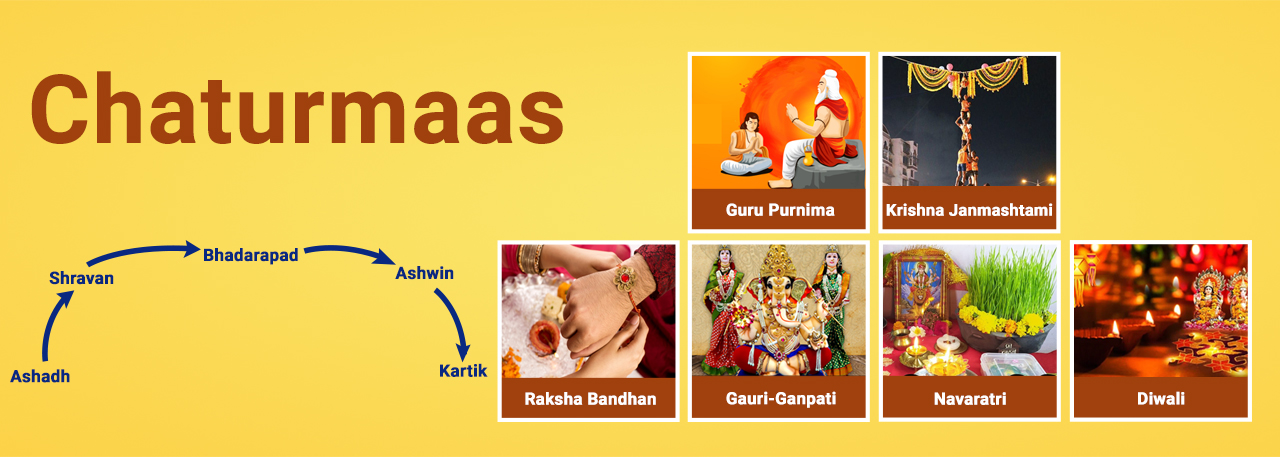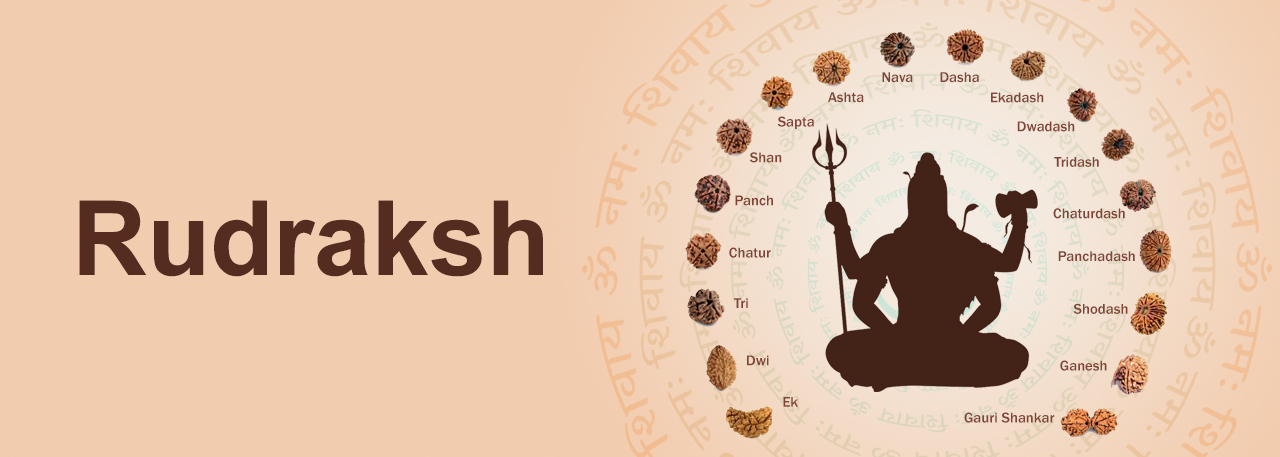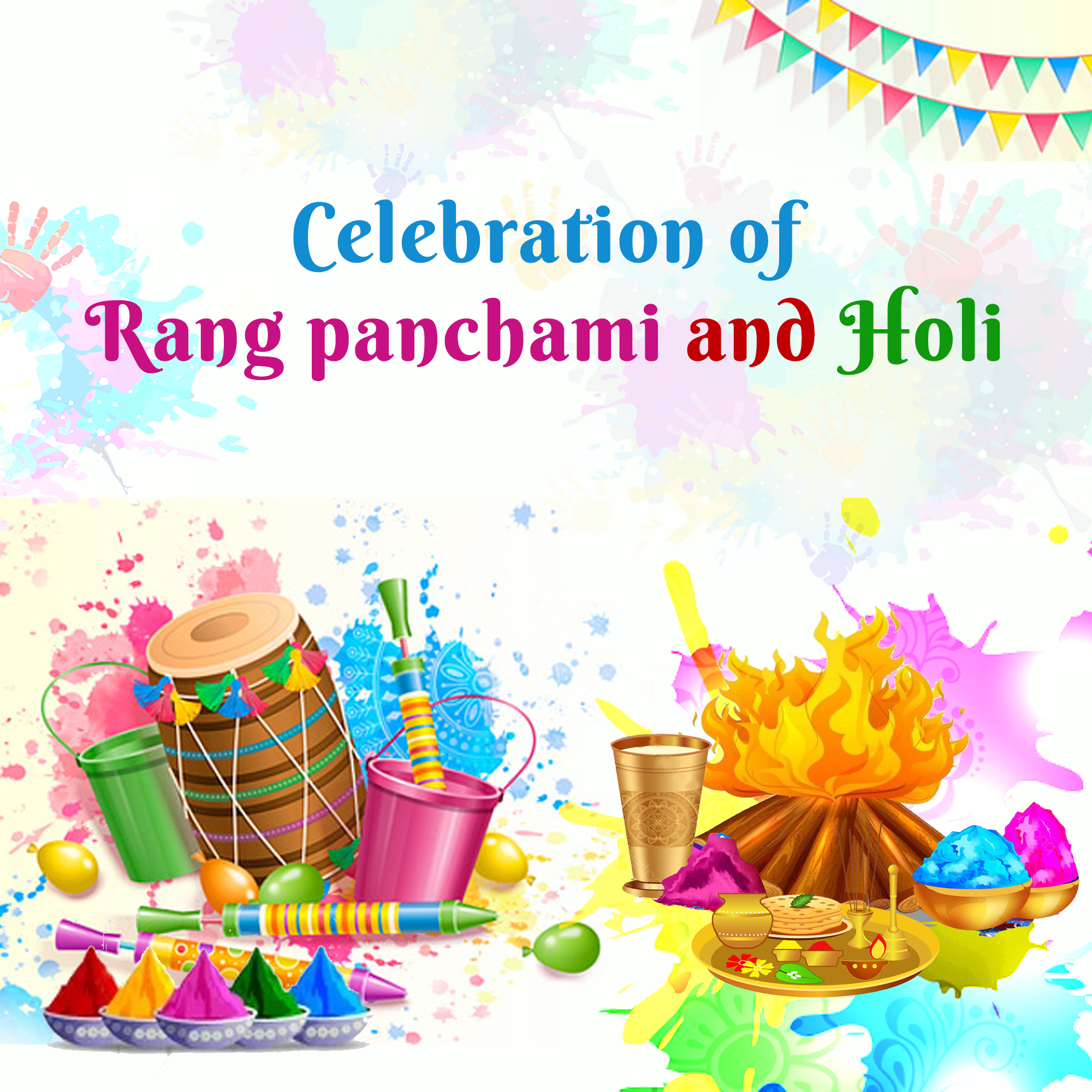Chaturmaas

Chaturmaas
Right from the Devshayani Ekadashi which falls on the 11th day of the Shukla paksha, of Ashadh maas (4th Lunar month) when Sun enters in to Karka (Cancer) rashi, till the Devprabodhini Ekadashi, the 11th day of the Shukla paksha, of Kartik maas (8th Lunar month) of Vedic Panchang (calendar) Chaturmaas when Sun transits through Tula (Libra) rashi, is observed as a period of piety all over India.
It is believed that the Gods are asleep during Chaturmaas, hence the name Devshayani (Dev = god, shayan = sleep). This term is associated with the Yoganidra form of Lord Vishnu. When the Gods wake, this period ends, hence the name Devprabodhini (Prabodh = wakefulness). The Chaturmaas period is considered inauspicious for celebrations such as weddings, and reserved for religious practices such as penance, fasting, bathing in holy rivers, etc.
Chaturmaas (चतुर्मास) translated literally means ‘four months’, and begins in monsoon around June – July and ends by October – November. It is known by numerous names in different regions: Toli in Telugu, Aashadi Ekadashi in Maharashtra and Maha Ekadashi in the North. Devpoli, Padma Ekadashi, Hari Shayani Ekadashi are also some of the rare names.
Like all tradition, this has a logical explanation. Disease spreads quite rapidly with the coming of the monsoon. Observing fasts and purity rituals enhance health. In this season to avoid health issues like gastro or indigestion people refrain from consumption of onions and garlic during Chaturmaas.
Though events that mark rites of passage are not recommended, the Chaturmaas is full of festivals that celebrate the glory of the divine. The festivals celebrated are: Guru Purnima; Krishna Janmashtami; Raksha Bandhan; Ganesh Chaturthi; Navratri (Dussehra–Durga Puja– Vijayadashami); Diwali.
Let us read a story associated with the origins of Chaturmaas. King Bali was an Asura ruler, grandson of Prahlad. Afraid of his growing power over the trilokas, Indra prayed to Lord Vishnu for protection. Lord Vishnu visited Bali in the guise of Vaman, a brahmin boy. He asked the king for a gift of land that would be covered in 3 steps. Bali laughed at the meagre plea yet agreed to fulfil the brahmin’s wish.
Vaman grew colossal, and covered Earth in one step, and Swarga Lok in the other. Bali realised it was none other than Vishnu, and offered him his own head. This was the sign of true nobility- he gave up his own instead of turning the brahmin away. Vaman accepted his offer and with his step, pushed him back into Narak.
Pleased with his display of devotion, Lord Vishnu offered him a wish. Bali merely folded his hands and requested Vishnu and Lakshmi to live in his abode for one third of the year. Hence, the period of four months, Vishnu and Lakshmi rest in Bali’s home, and we observe meditative and atonement rituals.
This year, the Chaturmaas begins on Sunday, the 10th of July and ends on Saturday, the 5th of November.
Contact
Home Address
Phone No. : 91+ 749 9846 591
Email: mrunal@vedikastrologer.com
Address: Plot D-2, Telco Soc no 14, Sector 24, Kanch ghar chowk, Pradhikaran, Nigdi, Pune 411044
Office Address
Address: Vision Plus, Datta Nagar Rd, Block B6, Datta Nagar, Transport Nagar, Nigdi, Pimpri-Chinchwad, Maharashtra 411044.
Map
Disclaimer: Astrological services are based on information given by clients and the Astrologer (author) is not liable and responsible for any correctness of analysis or any loss occurred due to the analysis as the same is given basis on the planet status as of the day of prediction.

























